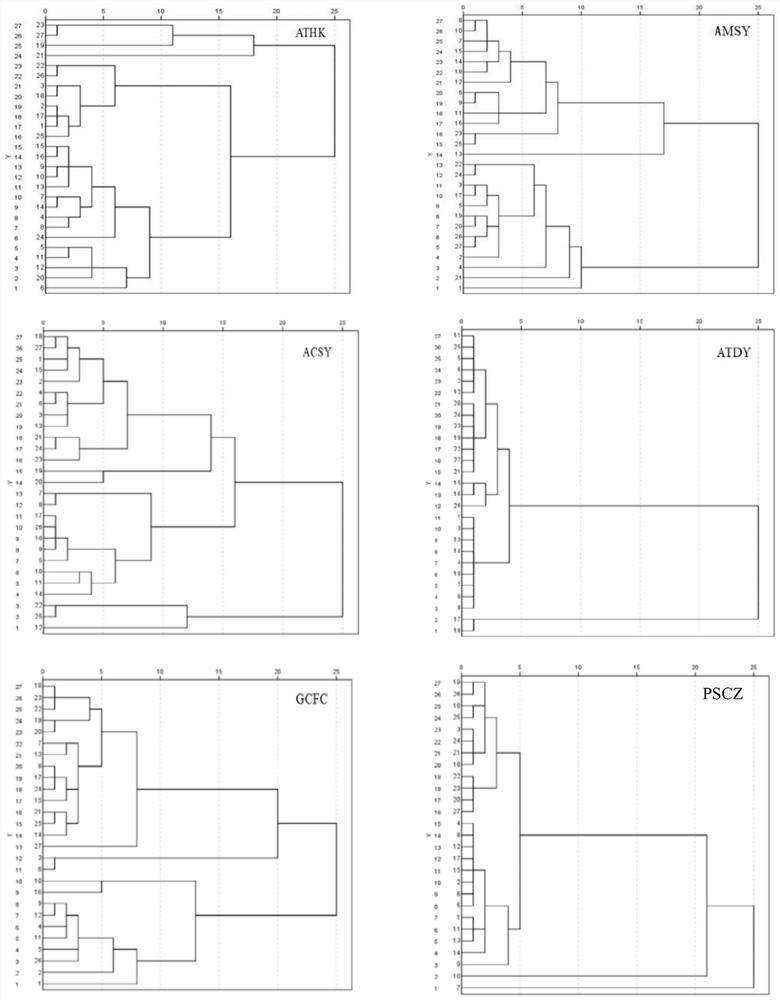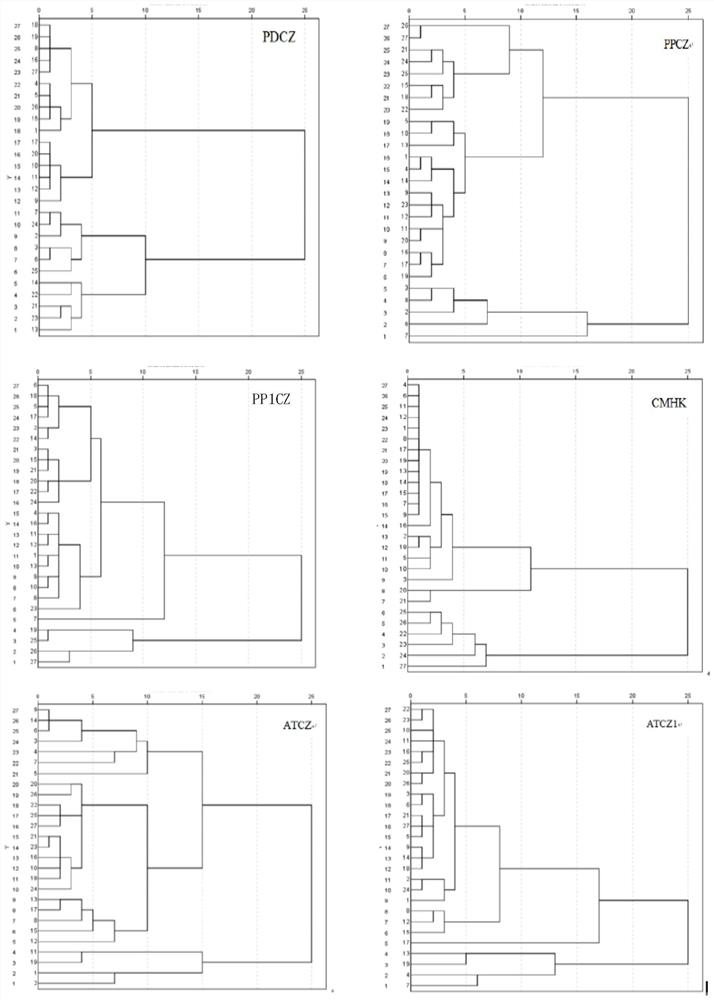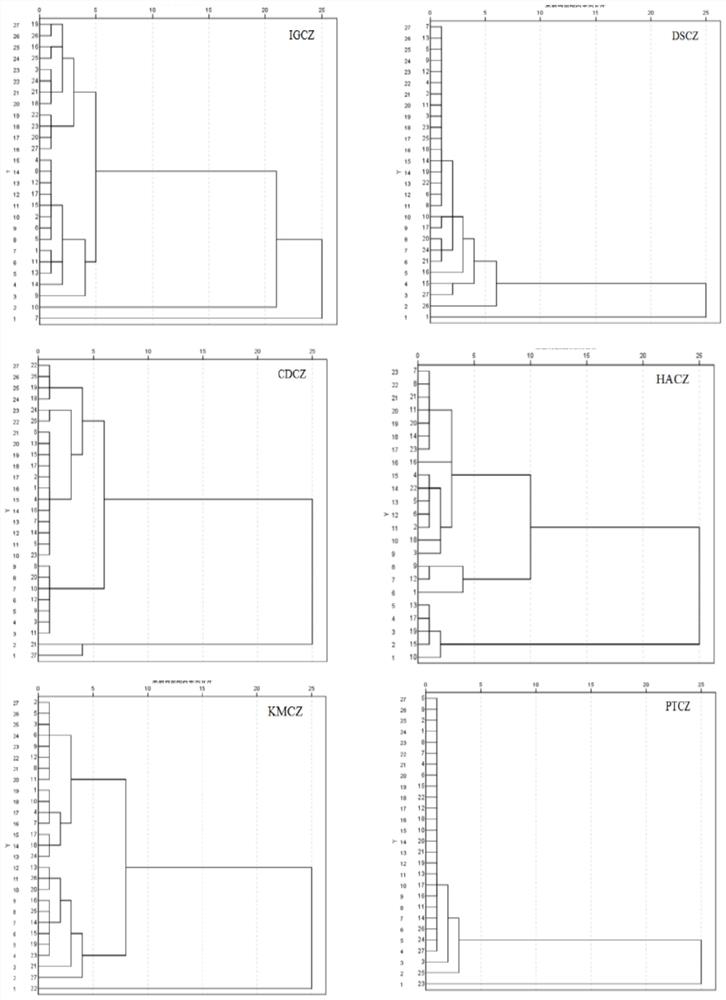The invention also discloses application of three-dimensional fluorescence spectrometry in identification of paralytic shellfish toxin-producing microalgae
A three-dimensional fluorescence and shellfish toxin technology, applied in fluorescence/phosphorescence, material excitation analysis, etc., can solve problems such as poor repeatability, restrictions on on-site management of shellfish toxins, and poor timeliness
- Summary
- Abstract
- Description
- Claims
- Application Information
AI Technical Summary
Problems solved by technology
Method used
Image
Examples
Embodiment 1
[0068] 1. Experimental method
[0069] 1. The cultivation of algae:
[0070] The algae culture used natural seawater (pH 7.5±0.1, salinity 27‰, purchased from Huangsha Aquatic Products Market, Guangzhou), filtered through a 0.45 μm microporous membrane, and sterilized at 121°C and 15psi for 25 minutes , cooled to room temperature. Prepare the algae culture solution with f / 2 improved formula, place it in an artificial climate box after inoculation, the temperature is 25°C, and the light intensity is 150 μmolm -2 the s -1 , cultured under the condition of light-dark cycle L:D=12:12. Three parallel samples were set up for each algae, and samples were taken every other day at a fixed time. After being fixed in Galluger, the algae cells were counted under a microscope, and the growth curve was drawn.
[0071] 2. Measurement of fluorescence spectrum of algae in different environments:
[0072] Set the light intensity to 60 μmolm -2 the s -1 , 120μmolm -2 the s -1 , 200μmolm...
PUM
 Login to View More
Login to View More Abstract
Description
Claims
Application Information
 Login to View More
Login to View More - R&D
- Intellectual Property
- Life Sciences
- Materials
- Tech Scout
- Unparalleled Data Quality
- Higher Quality Content
- 60% Fewer Hallucinations
Browse by: Latest US Patents, China's latest patents, Technical Efficacy Thesaurus, Application Domain, Technology Topic, Popular Technical Reports.
© 2025 PatSnap. All rights reserved.Legal|Privacy policy|Modern Slavery Act Transparency Statement|Sitemap|About US| Contact US: help@patsnap.com



